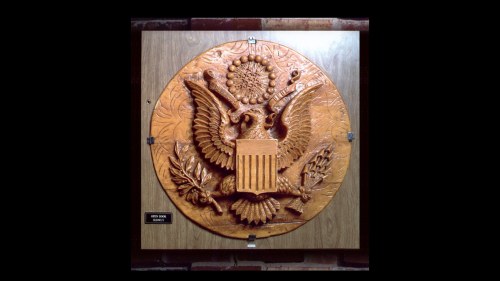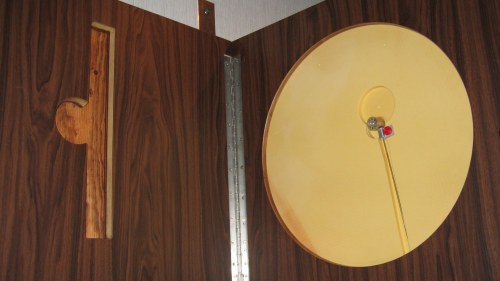historicallyaccuratesteve:maxistentialist:Maciej Cegłowski:In 1952, an American attaché in Moscow wa
historicallyaccuratesteve:maxistentialist:Maciej Cegłowski:In 1952, an American attaché in Moscow was innocently fiddling with his shortwave radio when he heard the voice of the American ambassador dictating letters in the Embassy, just a few buildings away. He immediately reported the incident, but though the Americans tore the walls out of the Ambassador’s office, they weren’t able to find a listening device.When the broadcasts kept coming, the Americans flew in two technical experts with special radio finding equipment, who meticulously examined each object in the Ambassador’s office. They finally tracked the signal to this innocuous giant wooden sculpture of the Great Seal of the United States, hanging behind the Ambassador’s desk. It had been given as a gift by the Komsomol, the Soviet version of the Boy Scouts.Cracking it open, they found a hollow cavity and a metal object so unusual and mysterious in its design that it has gone down in history as ‘The Thing’.‘The Thing’ had no battery, no wires, no source of power at all. It was was just a little can of metal covered on one side with foil, with a long metal whisker sticking out the side. It seemed too simple to be anything.That night the American technician slept with ‘The Thing’ under his pillow. The next day they smuggled it out of the country for analysis.The Americans couldn’t figure out how ‘The Thing’ worked, and had to ask the British for help. After a few weeks of fiddling, the Brits finally cracked The Thing’s secret.That little round can was a resonant cavity. If you shone a beam of radio waves at it at a particular frequency, it would sing back to you, like a tuning fork. The metal antenna was just the right length to broadcast back one of the higher harmonics of the signal.The resonator sat right behind a specially thinned piece of wood under the eagle’s beak. When someone in the room spoke, vibrations in the air would shake the foil, slightly deforming the cavity, which in turn made the resonant signal weaker or stronger.As the attaché discovered, you could listen to this modulated signal on a radio just like a regular broadcast. ‘The Thing’ was a wireless, remotely powered microphone. It had been hanging on the ambassador’s wall for seven years.Today we have a name for what ‘The Thing’ is: It’s an RFID tag, ingeniously modified to detect sound vibrations. Our world is full of these little pieces of metal and electronics that will sing back to you if you shine the right kind of radio waves on them.But for 1952, this was heady stuff. Those poor American spooks were up against a piece of science fiction.Today I want to talk about these moments when the future falls in our laps, with no warning or consideration about whether we’re ready to confront it.Another amazing talk by the creator of Pinboard. I first heard Maciej speak at XOXO, he blew me away. This transcript of his Webstock talk was also amazing.Technically outside the scope of this blog, but this was way too interesting/cool not to share. -- source link
Tumblr Blog : maxistentialist-deactivated2020.tumblr.com
#resonance#rfid

